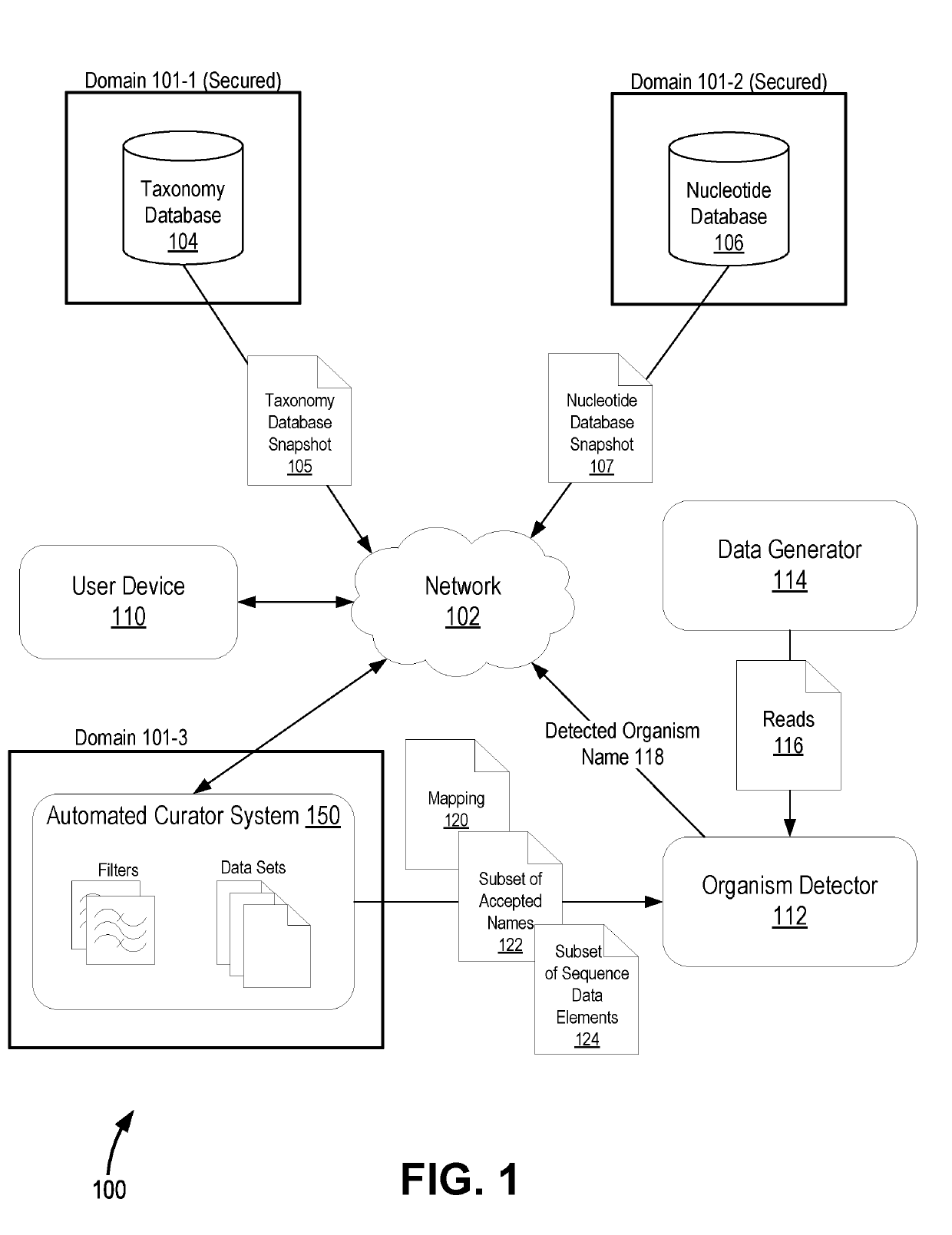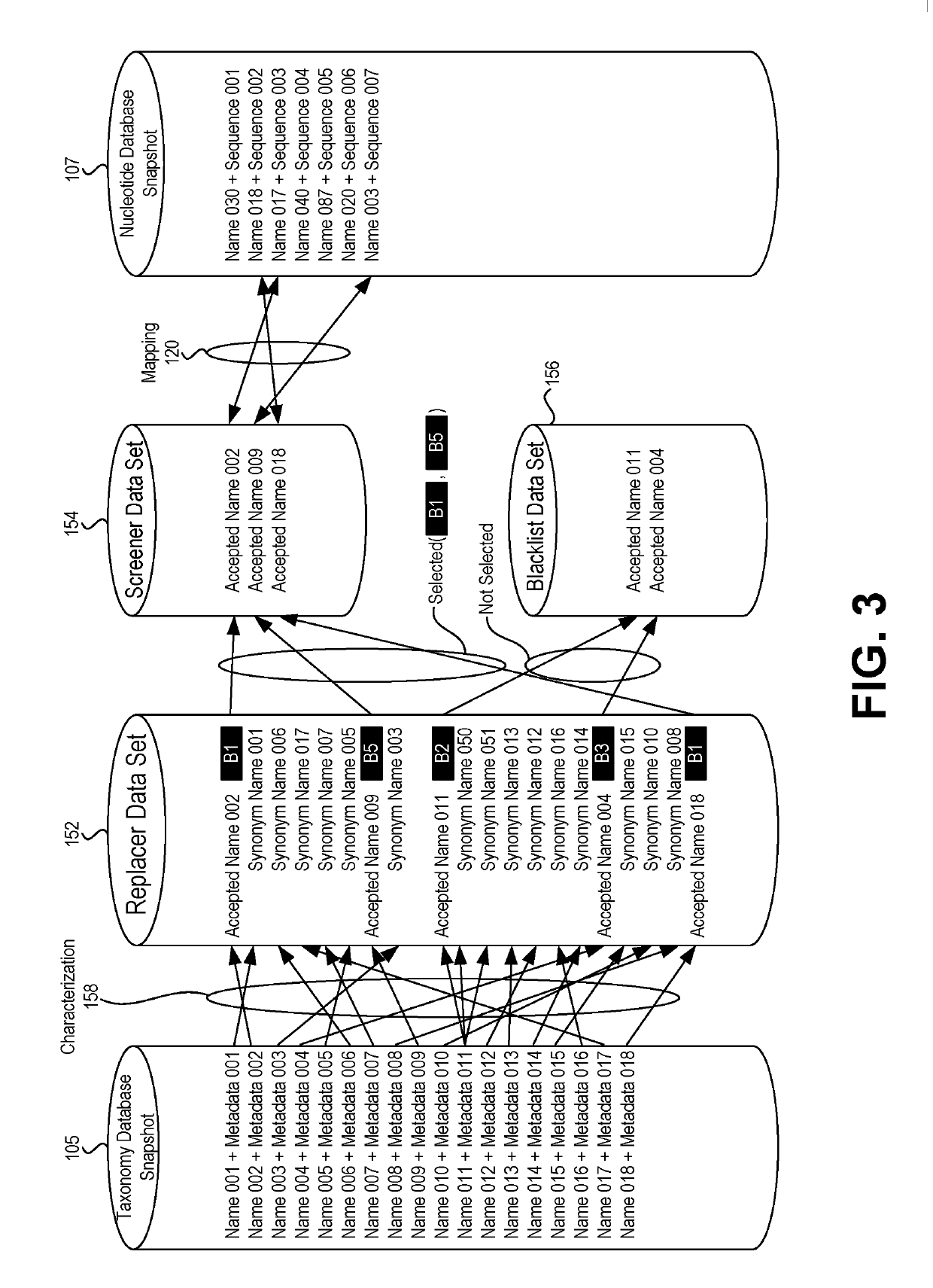Automated database updating and curation
a database and automatic technology, applied in the field of automatic database updating and curation, can solve the problems of inability to retrieve information held in other synonym taxonomic entries, frequent addition, deletion, modification of entries, etc., and achieve the effect of avoiding the loss of information
- Summary
- Abstract
- Description
- Claims
- Application Information
AI Technical Summary
Benefits of technology
Problems solved by technology
Method used
Image
Examples
Embodiment Construction
[0014]Embodiments of the present disclosure relate to database management and retrieval systems. Specifically, embodiments relate to retrieval of information from read-only databases that hold taxonomic-related and sequence-related data. Such data may be updated at irregular intervals and without notice to the computing system retrieving the data. Embodiments of the present disclosure allow efficient retrieval and processing of data from read-only databases by utilizing various data sets and filters that are stored and operated within an automated curator system.
[0015]FIG. 1 illustrates a block diagram of a database management and retrieval system 100, according to an embodiment of the present disclosure. In some embodiments, the various components of database management and retrieval system 100 communicate via a network 102, which may include any one or more of the various available wired and wireless network technologies.
[0016]In some embodiments, database management and retrieval...
PUM
 Login to view more
Login to view more Abstract
Description
Claims
Application Information
 Login to view more
Login to view more - R&D Engineer
- R&D Manager
- IP Professional
- Industry Leading Data Capabilities
- Powerful AI technology
- Patent DNA Extraction
Browse by: Latest US Patents, China's latest patents, Technical Efficacy Thesaurus, Application Domain, Technology Topic.
© 2024 PatSnap. All rights reserved.Legal|Privacy policy|Modern Slavery Act Transparency Statement|Sitemap



